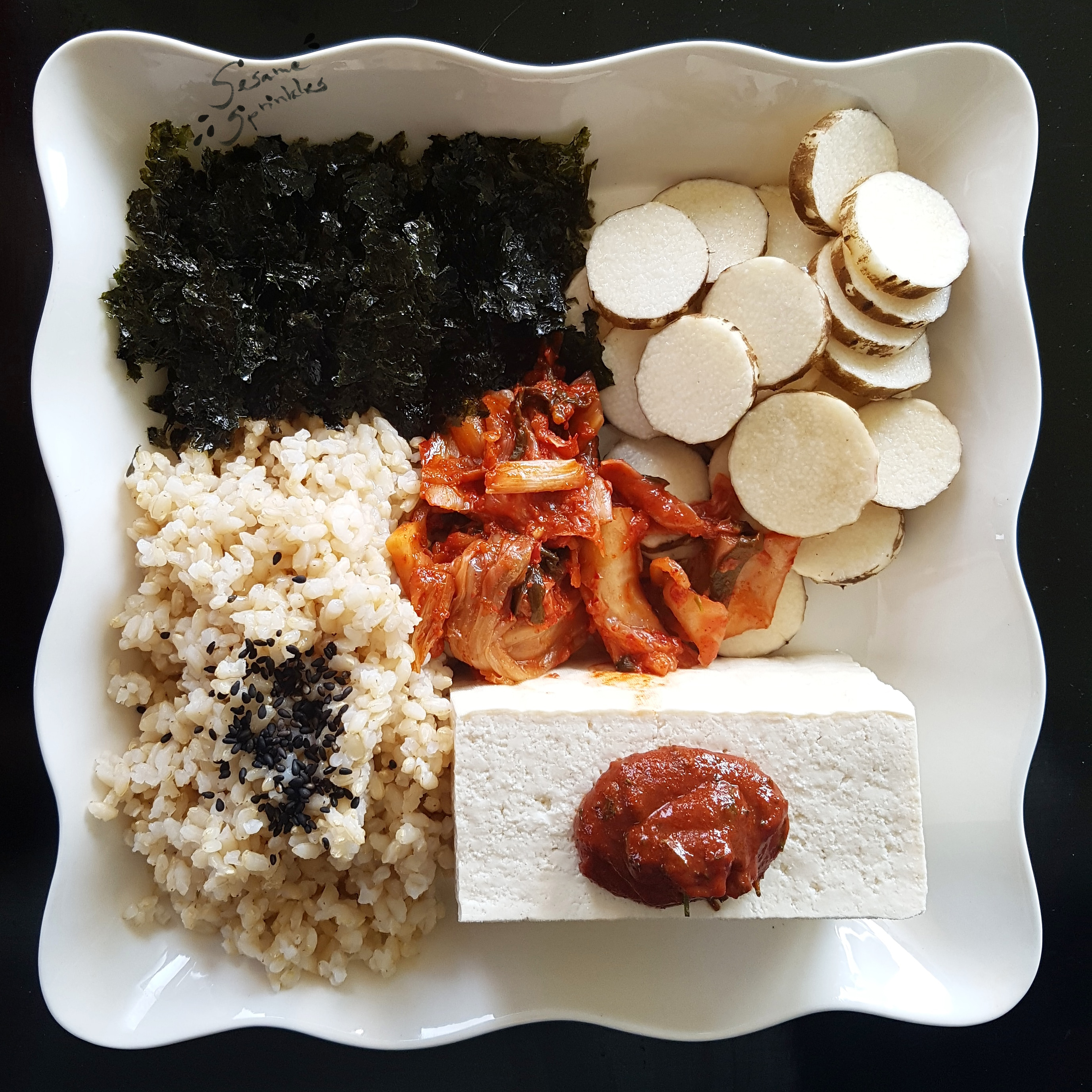
This is no regular sushi! 🍣 This is vegan sushi.
What is that translucent topping? 😶 Doesn’t it look like slices of squid or some other type of seafood?
It’s a vegan jelly produced from the root of a plant scientifically called Amorphophallus konjac. This kind of plant-based jelly is perhaps more common in Japanese foods, where it is known as konnyaku (菎蒻). The Korean name for it is gonyak (곤약).
Jelly made from konjac (also spelled “konjak” in English) is chewy and has an almost rubber-like texture which is comparable to the consistency of cooked squid…🦑 And what’s more, it even smells fishy! 🐟🦑🐙
Regardless, gonyak is vegan 🌱, gluten free 🚫🌾 and literally fun to eat! [Sometimes you can hear squeaky sounds while chewing on it. 😆]


In Korea, gonyak is usually added to stews as well as stir-fries, because it absorbs liquid flavors very well. It adds texture as well as volume to food and its taste changes along with the seasonings. At the same time, the nutritional value of gonyak is very low and it contains almost no calories (10-15 kcal per 100g). This is why in contemporary Korean cooking, gonyak is occasionally used as a low-calorie and low-carbohydrate replacement for regular noodles. The noodles, however, have the distinct smell of seafood and a gelatinous texture.





If you are keen to experiment with this ingredient in your kitchen, simply look for gonyak at your local supermarket in Korea! Gonyak is sold in various shapes, ranging from a block of jelly to fine noodles (sil-gonyak 실곤약)! 🍲 Outside Korea, you may be able to find konjac jelly in an Asian food store, where it’s perhaps labeled as “konnyaku” or “shirataki“.
Store-bought gonyak is usually packaged in a watery liquid, which needs to be discarded after opening. Washing gonyak in fresh water is supposed to help removing some of the jelly’s fishy smell.
Another fun fact:
Powdered gonyak is also used as a thickener in desserts. There are some Asian-style fruit jellies which use gonyak instead of gelatin and are consequently friendly to vegan, vegetarian, kosher and halal diets. When you check the ingredient list on the packaging and you see the words “곤약” or “gelling agent E425”, it refers to gonyak. 📃 Gelatin on the other hand is labeled as “젤라틴” or “E441”. 🐖
By the way, before I learned about gonyak, it was difficult to find a decent substitute for the common jello, which contains gelatin. I tried numerous alternative gelling agents (e.g. agar, pectin, carrageenan, potato starch) but the resulting texture was not satisfying. Those vegan jellies were either too soft, too watery or they melted too quickly. 😞 Gonyak, on the other hand, creates a jelly with a more stable consistency that is also juicy. 😋
[I wonder what gummibears made of gonyak would taste like! 😏]
.
.









